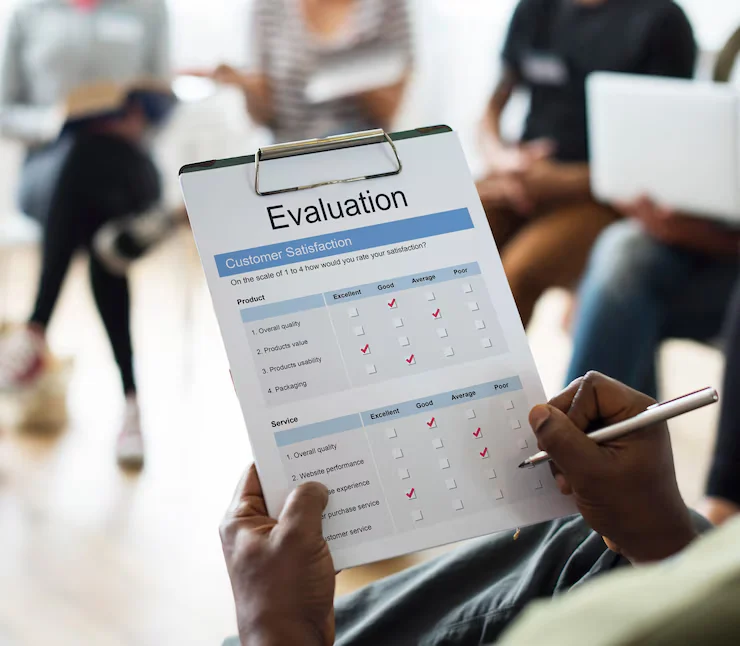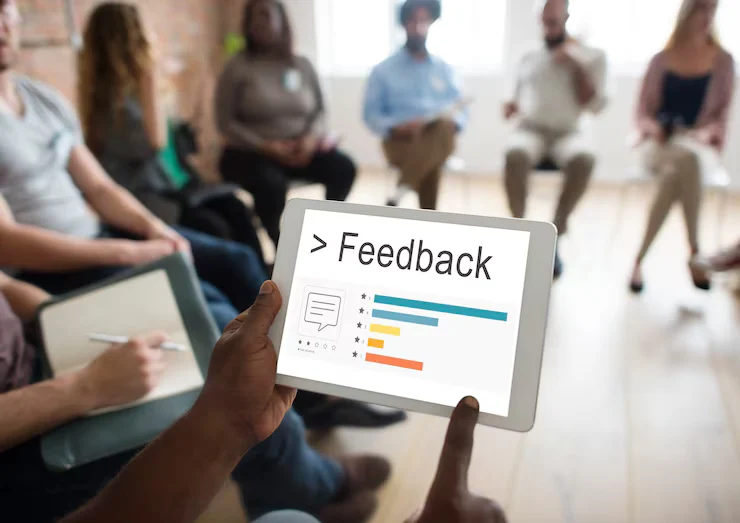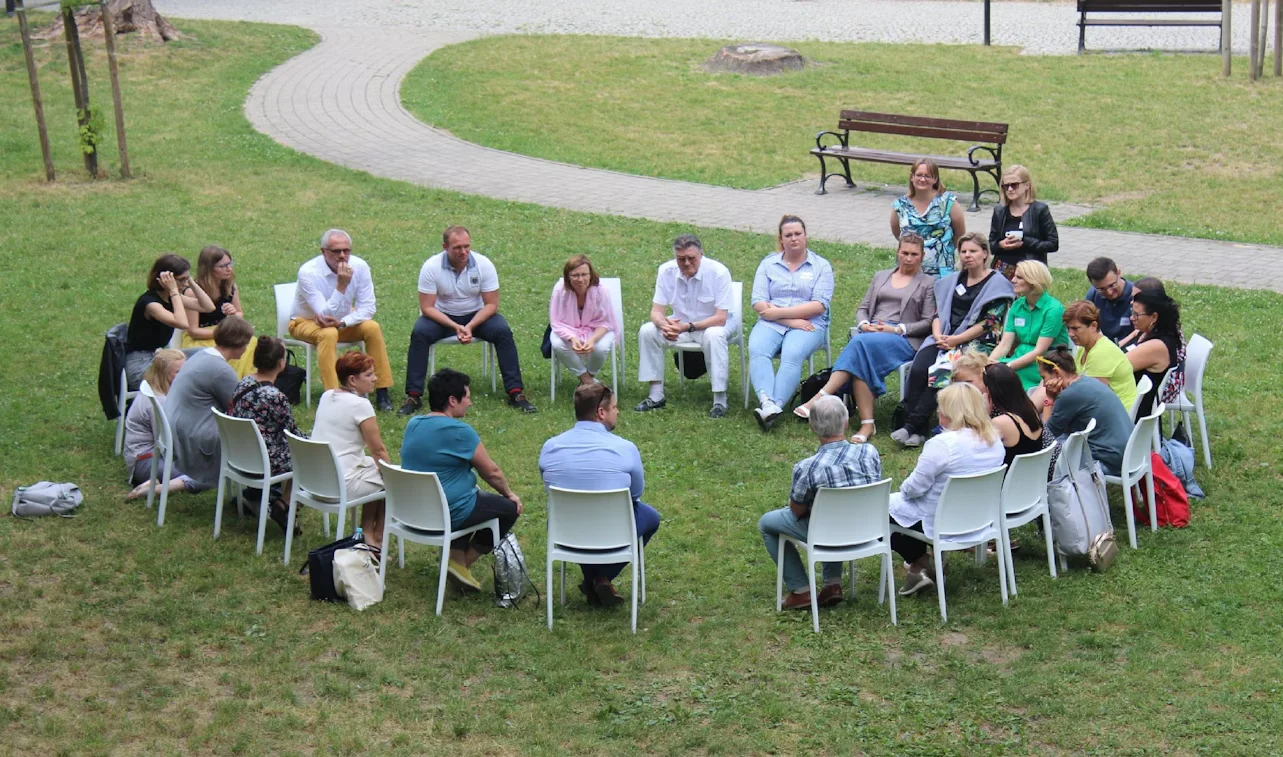Types of evaluation play a vital role in measuring program success. Understanding various evaluation types empowers organizations to make informed, data-driven decisions and improve outcomes. In this guide, we’ll explore each type of evaluation, when to use it, and how they differ.
What Are the Main Types of Evaluation?

Evaluation is critical for measuring the success of programs and policies. Understanding the types of evaluation and how to apply them empowers development professionals to drive change through evidence. Below, we explore each evaluation type, when to use it, and provide real-world examples from global organizations.
1. Formative Evaluation – Shaping During Development

Formative evaluation is one of the critical types of evaluation used during a project’s early stages. It ensures your program design is on track and allows you to adjust as you go.
Example:
A healthcare organization developing a new patient education tool conducts a formative evaluation by piloting it with a small group. Feedback from users helps enhance the interface and content before full-scale deployment.
Real-World Example:
The Global Fund uses formative evaluation to improve malaria control strategies. When developing new mosquito nets, they rely on field workers’ feedback to refine usability before distribution.
2. Summative Evaluation – Measuring Final Outcomes
Summative evaluation, another essential evaluation type, measures whether the program achieved its intended outcomes after completion.
Example:
A school district evaluates the success of a year-long literacy program by analyzing changes in student reading scores.
Real-World Example:
The World Health Organization (WHO) conducts summative evaluations after vaccination campaigns to assess immunization coverage and the decline in disease incidence.
3. Process Evaluation – Tracking Implementation

Process evaluation-one of the evaluation types-focuses on the actual delivery and procedures of a program.
Example:
A youth mentorship initiative monitors how closely mentors follow guidelines and engage mentees through process
evaluation.
Real-World Example:
The National Institutes of Health (NIH) applies process evaluation in clinical trials to verify recruitment procedures, data collection integrity, and adherence to protocols.
4. Impact Evaluation – Detecting Long-Term Change
Impact evaluation, a key evaluation type, measures the sustained effects of a program over the long term.
Example:
A government evaluates the long-term effects of an anti-smoking campaign by tracking smoking rates years after the intervention.
Real-World Example:
The Bill & Melinda Gates Foundation uses impact evaluation to assess its education programs in sub-Saharan Africa tracking school retention, employment, and community well-being over time.
5. Cost‑Effectiveness Evaluation – Optimizing Value
Cost‑effectiveness evaluation compares costs against outcomes to see which program type delivers the most impact for funds spent.
Example:
A non-profit compares the cost and results of two housing solutions temporary shelters versus permanent housing to identify the better investment.
Real-World Example:
The World Bank frequently conducts cost-effectiveness evaluations to determine how to best allocate funding across interventions, like comparing vaccination campaigns to maternal health services in low-income countries.
6. Developmental Evaluation – Adapting in Real Time

Developmental evaluation thrives in dynamic projects, providing real-time insights and supporting ongoing evolution another important evaluation type.
Example:
A tech organization deploying a mobile health platform in remote areas uses developmental evaluation to gather ongoing user feedback and improve the system in real time.
Real-World Example:
The Gates Foundation applies developmental evaluation in agricultural projects by using real-time data to adapt techniques that improve food security and farmer productivity.
Comparison Table: Evaluation Types at a Glance
| Evaluation Type | Timing | Focus | Purpose | Example | Real-Life Application |
| Formative Evaluation | During planning or early implementation | Design and delivery of the program | Improve program design, gather feedback, refine processes | Pilot testing a new health tool or educational program | Global Fund refining malaria nets before full deployment |
| Summative Evaluation | After the program ends | Overall success and outcomes | Measure success, assess whether goals were met | Assessing student performance after a literacy program | WHO evaluating the impact of vaccination campaigns |
| Process Evaluation | During program implementation | Procedures, activities, delivery | Ensure program is being implemented as planned | Monitoring mentor participation in a youth program | NIH monitoring the implementation of clinical trials |
| Impact Evaluation | After program completion | Long-term effects, behavioral changes | Measure long-term impact and sustainability | Evaluating the long-term effects of a public health campaign | Gates Foundation assessing educational programs in Africa |
| Cost-Effectiveness Evaluation | Throughout the program | Cost vs. outcome comparison | Assess financial efficiency and value for money | Comparing housing programs based on cost vs. outcomes | World Bank assessing the cost-effectiveness of healthcare programs |
| Developmental Evaluation | Continuous throughout the program | Real-time feedback and adaptation | Support ongoing development and innovation in complex settings | Adapting a new technology platform for healthcare workers | Gates Foundation applying real-time feedback in agricultural projects |
Choosing the Right Evaluation for Your Program
Understanding the different types of evaluation is crucial for selecting the right approach for your program. Each type offers unique insights and helps ensure that your interventions are effective, efficient, and impactful. By choosing the correct evaluation method, you can make informed decisions, improve your program’s design, and ultimately enhance its success.
Ready to Elevate Your Program’s Impact?
At Insight and Social, we specialize in results-driven Monitoring & Evaluation (M&E) strategies tailored to your goals. Whether you’re launching a new initiative or assessing long-term outcomes, our experts deliver data you can trust and insights that drive change.
Let’s uncover what works and what can work better.
Contact us today to design the right evaluation strategy for your project.
Email: mail@insightandsocial.com
Explore Our Services
Insight and Social — Driving Evidence. Powering Impact.





